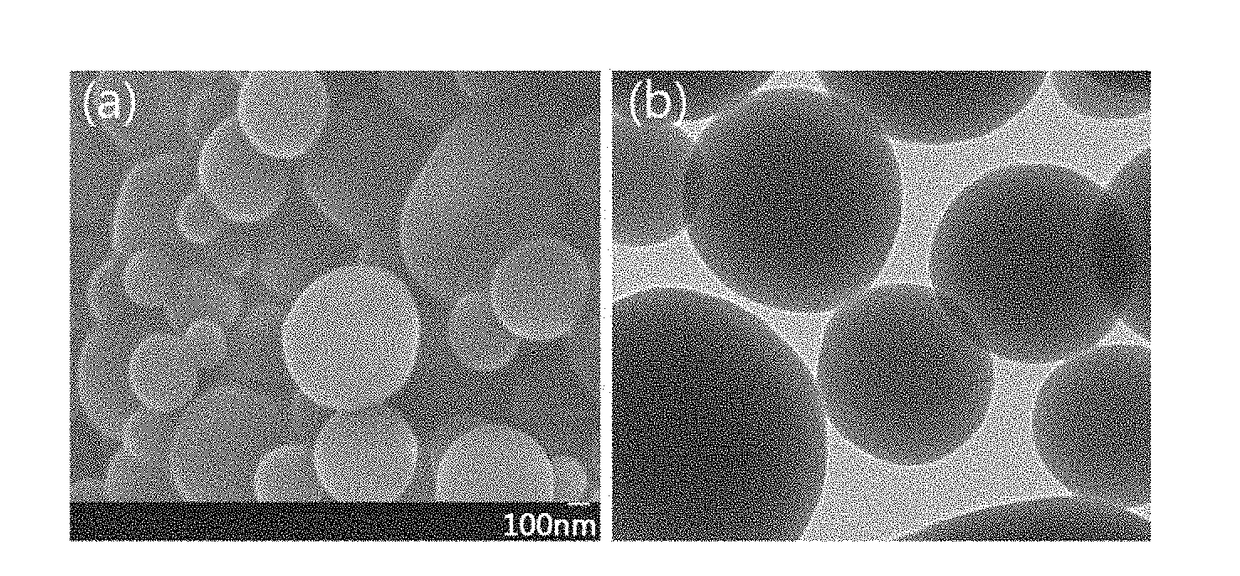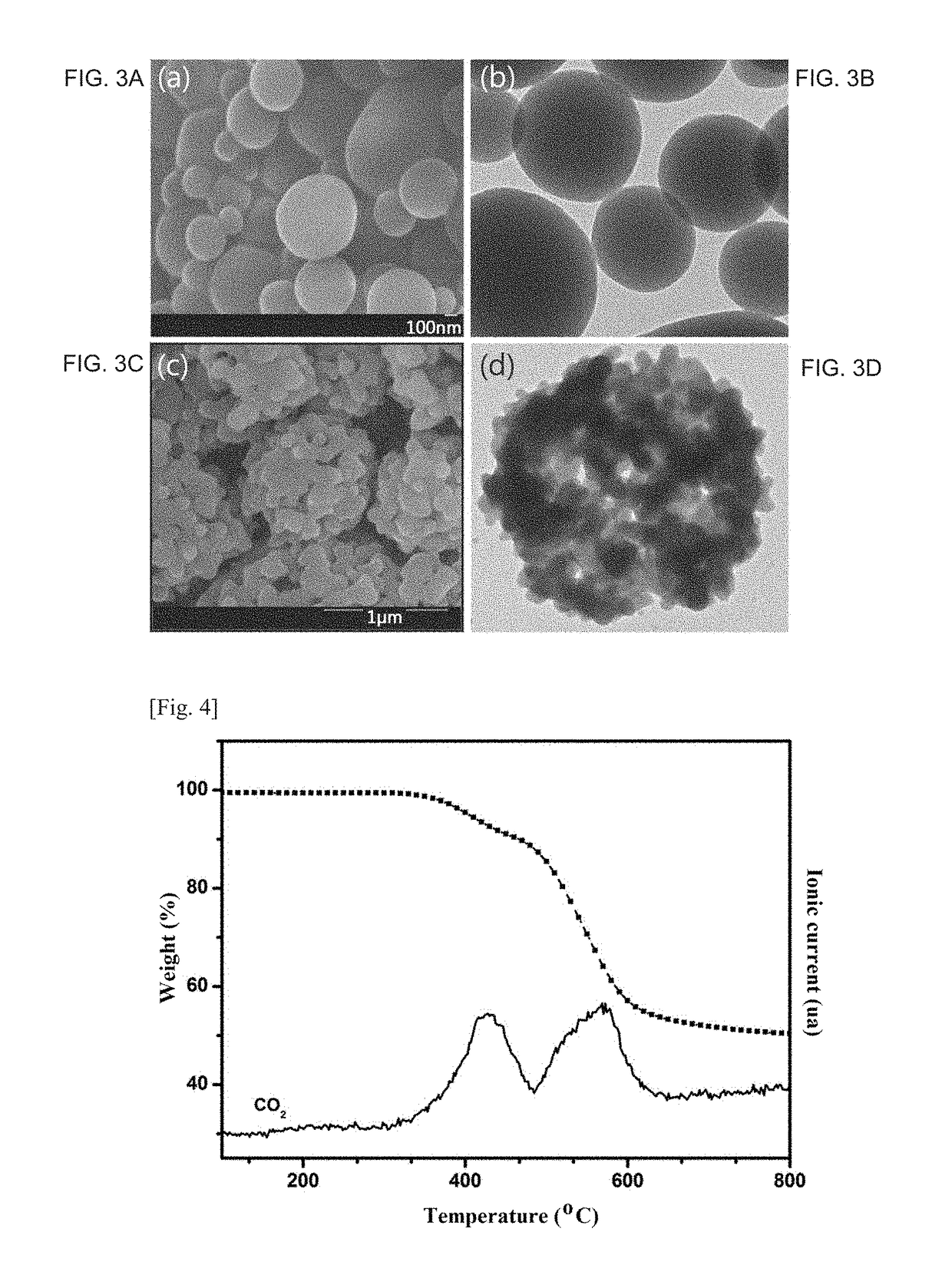Thermally rearranged poly(benzoxazoleco-imide) separation membrane for membrane distillation and fabrication method thereof
a separation membrane and polymer technology, applied in the direction of distillation, coating, membrane technology, etc., can solve the problems of low permeate flux, high heat loss during operation, and the majority of these organic polymers are poorly soluble in general organic solvents, so as to achieve high liquid entry pressure, low thermal conductivity, and high permeate flux
- Summary
- Abstract
- Description
- Claims
- Application Information
AI Technical Summary
Benefits of technology
Problems solved by technology
Method used
Image
Examples
synthesis example 1
Synthesis of Hydroxyl Polyimide-co-polyimide
[0120]2.0 mmol of 2,2-bis(3-amino-4-hydroxyphenyl)hexafluoropropane (APAF) and 8.0 mmol of 4,4′-oxydianiline (ODA) were dissolved in 10 ml of anhydrous NMP. The solution was cooled down to 0° C. and a solution of 10 mmol of 4,4′-hexafluoroisopropylidene phthalic dianhydride (6FDA) in 10 ml of anhydrous NMP was added thereto. After stirring at 0° C. for 15 min, the mixture was allowed to stand at room temperature overnight, affording a viscous polyamic acid solution. Subsequently, 20 ml of ortho-xylene was added to the polyamic acid solution. The mixture was subjected to imidization with vigorous stirring at 180° C. for 6 h. During the imidization, imide rings were created to release water, which was removed as an azeotropic mixture with the xylene. The resulting blown solution was allowed to cool to room temperature, precipitated in distilled water, washed with hot water, and dried in a convection oven at 120° C. for 12 h, affording the hy...
synthesis examples 2-9
Synthesis of Hydroxyl Polyimide-polyamide Copolymers
[0124]Hydroxyl polyimide-polyimide copolymers were prepared in the same manner as in Synthesis Example 1, except that the acid dianhydride, the ortho-hydroxydiamine, and the aromatic diamine were changed as shown in Table 1. The synthesized samples were named in the same manner as the hydroxyl polyimide-co-polyimide synthesized in Synthesis Example 1.
[0125]
TABLE 1SynthesisExample No.Sample nameMole fractions26FDA-APAF5-ODA5x = 0.5, y = 0.536FDA-APAF8-ODA2x = 0.8, y = 0.246FDA-APAF5-DAM5x = 0.5, y = 0.556FDA-HAB5-ODA5x = 0.5, y = 0.566FDA-HAB8-ODA2x = 0.8, y = 0.276FDA-HAB5-DAM5x = 0.5, y = 0.58ODPA-HAB5-ODA5x = 0.5, y = 0.59ODPA-HAB8-ODA2x = 0.8, y = 0.2HAB (3,3′-diamino-4,4′-dihydroxybiphenyl)DAM (2,4,6-trimethylphenylenediamine)
example 1
Fabrication of Thermally Rearranged Poly(Benzoxazole-co-imide) Separation Membrane
[0126]10 wt % of 6FDA-APAF2-ODA8 synthesized in Synthesis Example 1 was dissolved in dimethylacetamide (DMAc), 6 ml of the polymer solution was filled in a 10 ml syringe fitted with a 23G needle. The filled syringe was mounted in a syringe pump of an electrospinning system (ES-robot, NanoNC, Korea). The polymer solution was electrospun under general electrospinning conditions to form an electrospun membrane. The electrospun membrane was placed between an alumina plate and a carbon cloth, heated to 400° C. at a rate of 3° C. / min under a high-purity argon atmosphere, and maintained at 400° C. for 2 h for thermal rearrangement, yielding the thermally rearranged poly(benzoxazole-co-imide) separation membrane, the copolymer being represented by Formula represented by Formula 6:
[0127]
[0128](wherein x and y are as defined in Formula 5).
PUM
| Property | Measurement | Unit |
|---|---|---|
| temperature | aaaaa | aaaaa |
| thick | aaaaa | aaaaa |
| thick | aaaaa | aaaaa |
Abstract
Description
Claims
Application Information
 Login to View More
Login to View More - R&D
- Intellectual Property
- Life Sciences
- Materials
- Tech Scout
- Unparalleled Data Quality
- Higher Quality Content
- 60% Fewer Hallucinations
Browse by: Latest US Patents, China's latest patents, Technical Efficacy Thesaurus, Application Domain, Technology Topic, Popular Technical Reports.
© 2025 PatSnap. All rights reserved.Legal|Privacy policy|Modern Slavery Act Transparency Statement|Sitemap|About US| Contact US: help@patsnap.com



